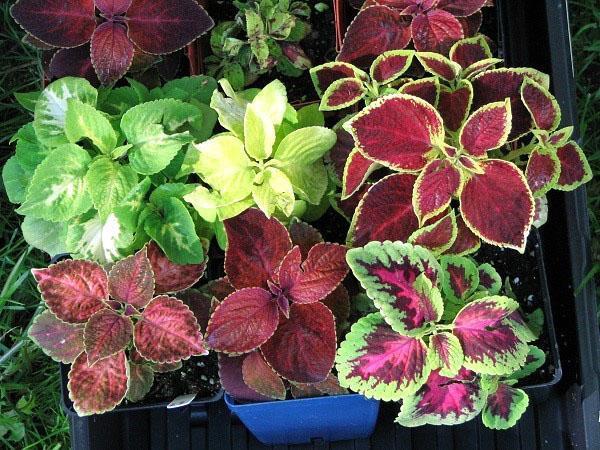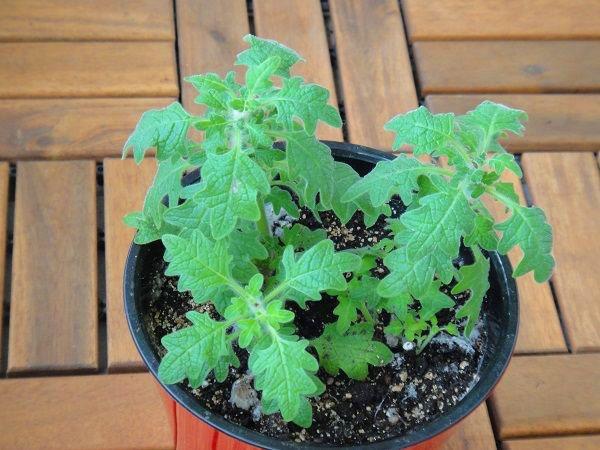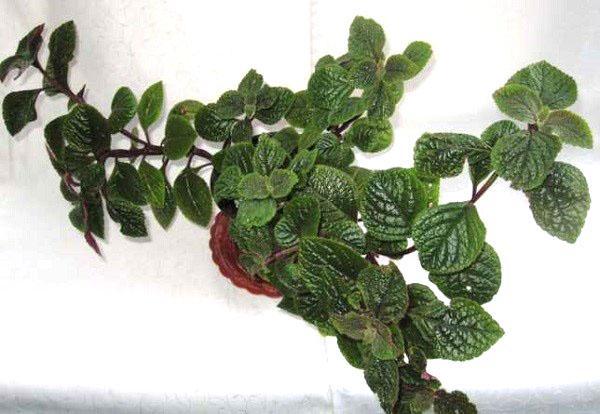Elegant handsome plectrantus: common types for home cultivation
 A beautiful shrub, all covered with graceful carved leaves of the most varied colors, has long won the love of flower growers. Even those who know absolutely nothing about plectrantus will surely find at least one plant on the site or in the apartment, according to the description it looks like this flower.
A beautiful shrub, all covered with graceful carved leaves of the most varied colors, has long won the love of flower growers. Even those who know absolutely nothing about plectrantus will surely find at least one plant on the site or in the apartment, according to the description it looks like this flower.
Some of the most common types of plectrantus for home cultivation include:
- plectranthus coleus;
- shrub plectrantus;
- plectrantus Ertendal;
- plectrantus hadienzis.
Almost all varieties of the flower emit a delicate aroma of mint, due to which the plectrantus is also called "room mint".
All types of flowers are evergreen ornamental deciduous plants. They have a beautiful, lush foliage cap, consisting of rounded leaves with a wavy edge. This shape of the leaf plate is characteristic of most varieties, but there are also varieties that differ significantly from their counterparts.

Plectrantus can be grown as a standalone plant or planted with larger flowers (palms).
Plectrantus wheel-shaped
 In the scientific literature, this species is often called the Madagascar Plectranthus. The plant has the shape of a bush with straight shoots. The leaves are very large, up to 6 cm long, slightly elongated (like an egg). The main color of the leaf plate is bright green. And whips, and leaves plectrantus coleus are covered with a delicate fluff, while the shoots themselves are dark pink.
In the scientific literature, this species is often called the Madagascar Plectranthus. The plant has the shape of a bush with straight shoots. The leaves are very large, up to 6 cm long, slightly elongated (like an egg). The main color of the leaf plate is bright green. And whips, and leaves plectrantus coleus are covered with a delicate fluff, while the shoots themselves are dark pink.
In home floriculture, a variety with green leaves is rare, most often its other varieties are grown, which have a more decorative color of the leaf plate:
- Plectranthus coleoides "Marginatus" - a white border is "drawn" on green leaves;

- Plectranthus "Green on Green" - there is a yellow edging with a slight green tint along the edge of the leaf;

- Plectranthus coleoides "Display" - the surface of the leaves is red, the central part of the plate and the edging are green, and the reverse side of the leaf has a light green tint;

- Plectranthus coleoides "Otto Mann" - orange leaves are surrounded by a yellow border with a greenish tinge, slightly shifting to the central part of the leaf;

- Plectranthus coleoides "Easy Gold" - the middle of the leaf plate is slightly shaded green, and the main color of the leaf is golden yellow.

Shrub plectrantus
 One of the largest shrubs is covered with monochromatic heart-shaped leaves with a wrinkled, slightly pubescent surface. With proper care, the plant can grow up to 1 m in height. The shoots are also covered with fluff.
One of the largest shrubs is covered with monochromatic heart-shaped leaves with a wrinkled, slightly pubescent surface. With proper care, the plant can grow up to 1 m in height. The shoots are also covered with fluff.
The leaves of plectrantus shrub have a very strong mint odor, which is able to scare away moths. For this reason, the plant is often referred to as the "molar tree".
The individual features of the species include:
- Active growth. The bush very quickly grows a deciduous head and forms new shoots, especially in summer, and has almost no dormant period. With the onset of autumn and before the beginning of winter, the growth of the flower slows down a little, but does not stop completely.
- Abundant flowering.In the middle of winter, this common type of plectrantus produces many small blue spikelet-like inflorescences that emit a fragrant aroma. Flowering lasts until the end of spring.
Some growers advise to pick off inflorescences so as not to spoil the overall decorative appearance of the bush.
Plectrantus Ertendahl
 A lush shrub needs regular pinching to maintain its shape, since without this procedure, its shoots can exceed 0.5 m in length. The surface of the deciduous plate is green, covered with lighter, silvery veins, but the reverse side of the leaf is deep pink. The shape of the leaf plate is round, with a slightly pointed tip and a wavy edge. Plectrantus leaves, when touched, exude a light camphor smell.
A lush shrub needs regular pinching to maintain its shape, since without this procedure, its shoots can exceed 0.5 m in length. The surface of the deciduous plate is green, covered with lighter, silvery veins, but the reverse side of the leaf is deep pink. The shape of the leaf plate is round, with a slightly pointed tip and a wavy edge. Plectrantus leaves, when touched, exude a light camphor smell.
Plectrantus Ertendahl with its creeping shoots is ideal for creating a ground cover flower bed or for growing in pots.
During flowering, the plant throws out large, up to 30 cm high, spikelet inflorescences on the tops of the branches. Each flower is also quite large (almost 1.5 cm in length), painted white.
In the case of too bright lighting, the redness on the back of the sheet can transfer to its surface. To return the plant to its former appearance, it is necessary to rearrange the pot to a more darkened place.
Plectranthus Hadienzis
 Grows in a small compact bush, forms slightly hanging shoots. The leaves are colored light green and covered with dense fluff, due to which this species is also called felt plectrantus. Fleshy, fleecy leaves are usually monochromatic, but there are variegated varieties of the flower.
Grows in a small compact bush, forms slightly hanging shoots. The leaves are colored light green and covered with dense fluff, due to which this species is also called felt plectrantus. Fleshy, fleecy leaves are usually monochromatic, but there are variegated varieties of the flower.
The species is especially popular among the peoples of India, where it is used to prepare various dishes. Perhaps for this reason, the plant is also called the Indian Borage.
Under natural conditions, plectrantus hadienzis is capable of reaching larger sizes than with indoor cultivation. There are even specimens up to 75 cm in height and with large (up to 9 cm in length) leaves.
The plant is one of the most light-loving species. For active growth, it needs good lighting.
The described common types of plectrantus take root well after rooting and are able to quickly build up green mass. They do not have any special requirements for care. It is enough just to pick up a bright place for the plant with diffused lighting, water it regularly and occasionally feed the flower. For that plectrantus will thank the owners with a chic deciduous hat and attract good luck, according to folk signs.